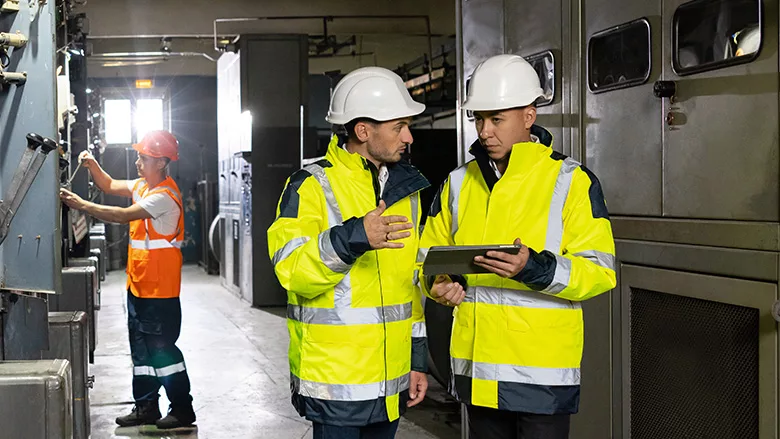Disaster Response Plans — What Do You Need to Know?

Photo credit: Mykola Pokhodzhay / iStock / Getty Images Plus via Getty Images
After running at CAT volumes from severe flooding in our region in 2006, I began the process described in Restoring Success — “What the CAT just Happened?" — of taking time and considering “What did we do well? What can we do better next time?”
As I began to rewind the response and complexities encountered from the event and other previous commercial losses, I realized that if there was a written plan for organizations – if critical decisions were made ahead of time rather than during an emergency situation – then restoration companies would be able to respond more effectively and efficiently. We could better mitigate the impact of a disaster, provide better support for a full recovery and get businesses up and running faster than ever before.
Next, I started educating myself on business continuity. I instantly found my passion for disaster planning as it tapped into core principles in restoration and emergency response, as well as operations. From there, I developed and executed presentations and materials, formed a recovery network, built assessments and systems, and launched a commercial recovery program. I had the opportunity to work and collaborate with other service providers, first responders and local companies on preparedness initiatives and plans.
Fast forward to March 2020. The COVID pandemic struck and the Governor of Pennsylvania shut down all non-life sustaining businesses. There was fear and a lack of direction, and members of our community looked to our industry for guidance and services. I instantly reflected on the years of disaster planning presentations and my pandemic slide.
Prior to the pandemic, I admittedly spent little time on the threat and plans needed to respond to a pandemic during my disaster planning presentations. I shared a couple of tips and moved on. As we faced the pandemic, I reflected on this. It was time to help deliver direction.
I reached out to a colleague and launched a free community webinar on April 3, 2020: “Prepare your Business in the Presence of Coronavirus.” This was well before the plethora of webinars, information, templates, guidance, etc. I was able to respond to a need in the community quickly because of my work in planning and preparedness in combination with my restoration background.
The intent of my story is to provide context for a real-world, practical application for disaster planning and preparedness in our industry. Planning and preparedness is a complex multidisciplinary field and the following is a brief list of some things to know and consider.
Disaster planning is for commercial and residential customers. There are synonyms: emergency response plan, disaster planning, business continuity plan.
We often use the word “mitigate” in describing our services. We minimize and reduce further damage as service providers. When we get involved in the process of planning for any kind of unplanned disruption or disaster, we are helping to mitigate damage and disruption before it even happen.
By tapping into your past experiences as a restorer, combined with the understanding of what planning is and its benefits, disaster response planning is a terrific way to develop stronger relationships with those you are serving.
If you provide commercial services or plan to service the commercial sector, you must be able to follow and execute emergency response plans, even if you were not involved in preparedness.
Governing, regulatory, and industry-specific authoritative bodies may require or recommend organizations to have a plan in place. You can easily research this in your regions. An example of this is child care facilities in PA.
Disaster plans and preparedness includes listing service providers and contact information. You have the opportunity to write yourself into the plans as a resource in a variety of services that you offer.
You get the opportunity to build relationships, learn from, and collaborate with other service providers in other sectors such as Insurance, Environmental, Information Technology, Emergency Management, and more.
As September is National Preparedness Month, now is the perfect time to engage and present yourself as a resource. Ready.gov has a wealth of information and tools to help you get ready for September and you can celebrate and spread the word by using some of the tools found HERE.
Now, I introduce you to Derek Preece, President of Spot On Solutions. We have a shared passion for helping individuals and companies in our industry succeed. He is a former restorer, and several years ago I learned we also had a shared passion for disaster planning and preparedness.
As he is an expert in helping restorers strategically market and grow their business, I asked him to add his perspective on the value of being involved in the disaster planning phase as a restorer and some of the tools and technology that are now available to us.
Preece
During my profession of providing digital marketing solutions for restoration companies, I am often told by clients and prospective clients that they want to get more commercial water and fire damage work. I always recommend that they start offering disaster response planning services (Business Continuity) to and for their clients.
Offering planning services, support, and tools is one of the best ways a restoration company can differentiate themselves from their competitors, all while adding a ton of value for their commercial and residential clients.
Here is why. Most businesses and homeowners know they need to have plans in place to prevent & minimize disruption in the event of an emergency. Most businesses and homeowners do not have plans in place simply because they have not had the time or resources to develop and document the plans. And they do not know where to start.
Many businesses and homeowners would love to have peace of mind knowing they are partnered with an emergency services provider that will respond immediately and who already knows their plans in loss situations. A disaster plan that is developed and facilitated with your restoration company solidifies your relationships with commercial and residential customers and guarantees that they will call you when losses happen.
For a restoration company seeking to build a relationship with a client before a disaster occurs, being heavily involved in the development of a company’s disaster response and recovery plan just makes good business sense. If you want your customers to know, like, and trust you when they have a disaster, build that relationship of trust BEFORE they need you. Plan your success by helping your customers plan for theirs.
The downside to offering planning services is that it can take a lot of work and resources to create and document each individual plan. And the delivery method over the years has remained very archaic. But with today’s technology, where everyone has a phone or tablet in hand, what was once a large and daunting task has become super streamlined and much, much easier. And big, clunky 3-ring binders are being replaced with apps.
Plus:
- An app gives all needed parties access to all the plans when disaster strikes.
- Apps make updating, editing, adding, and deleting plans easy.
- Preparedness and recovery apps make getting through the door to decision-makers and building partnerships with clients a breeze.
- And, most importantly, a preparedness and recovery app can effectively anchor customers to a restoration company.
Simply put, restoration companies who are serious about getting commercial work (and residential too) need to make disaster response planning services a huge part of their growth plans.
May learning about and being involved in disaster planning bring you much Restoring Success!
Looking for a reprint of this article?
From high-res PDFs to custom plaques, order your copy today!








